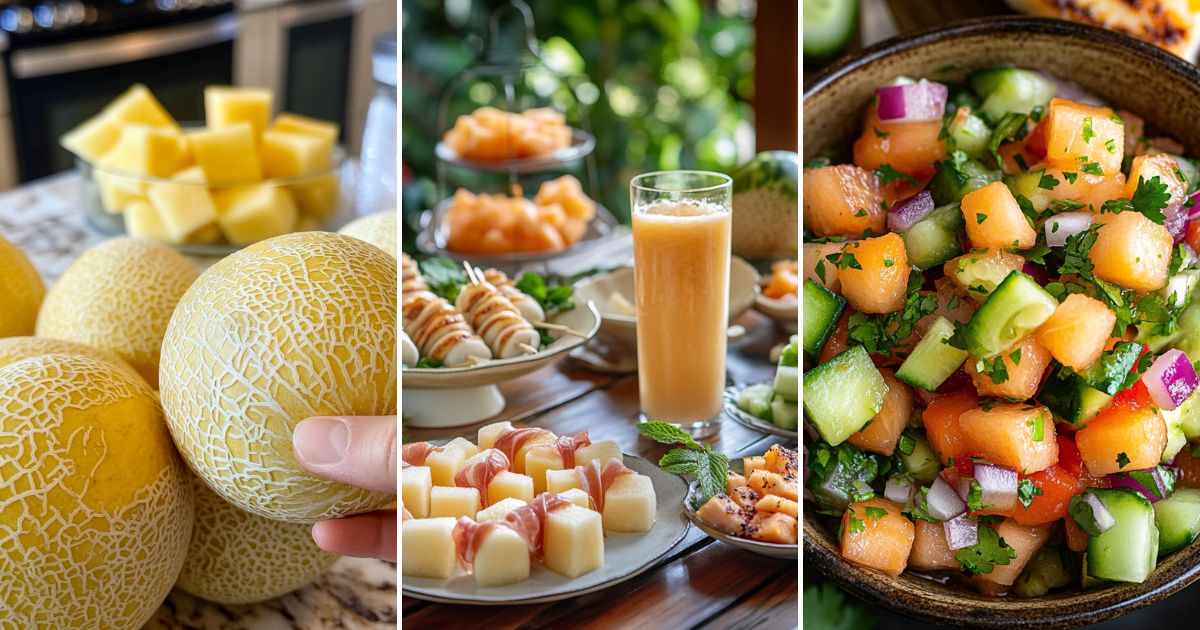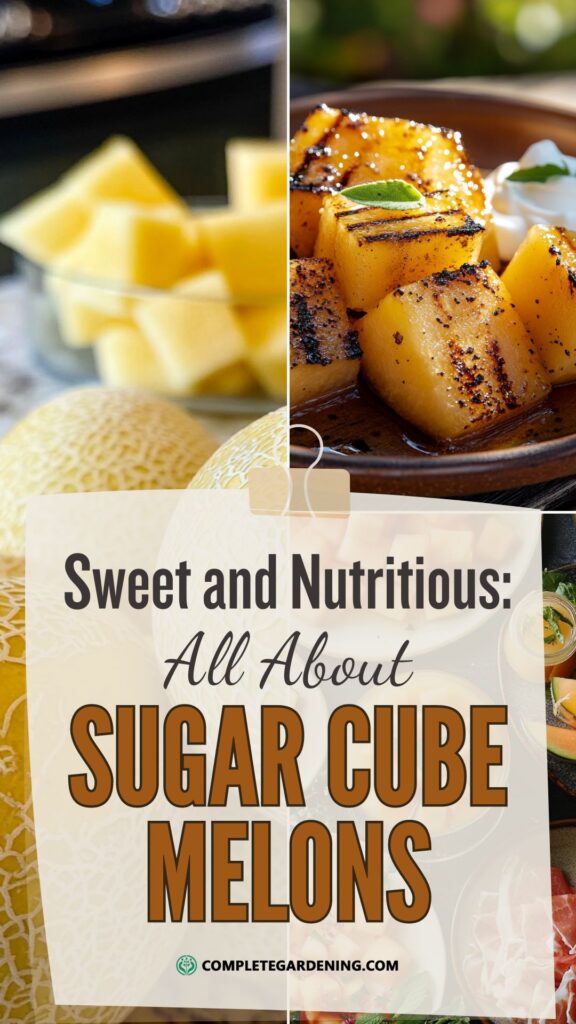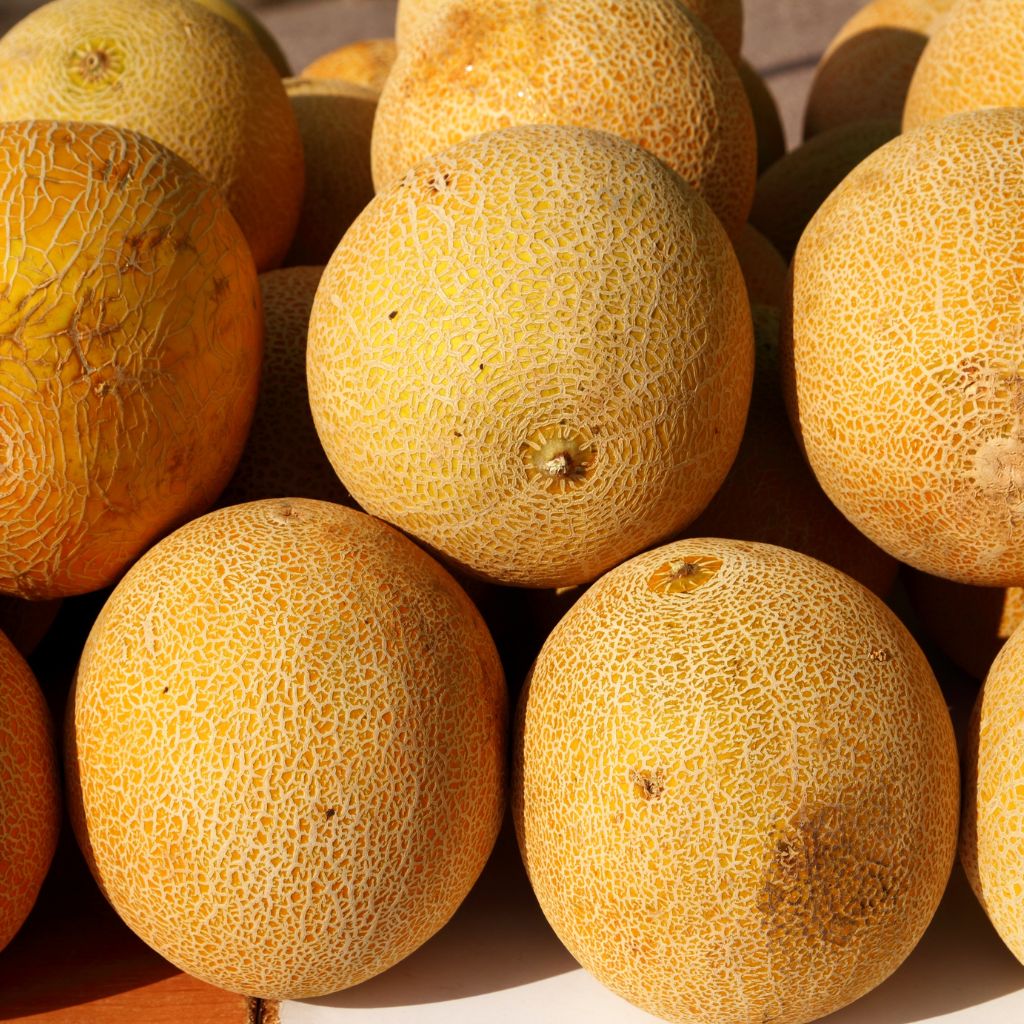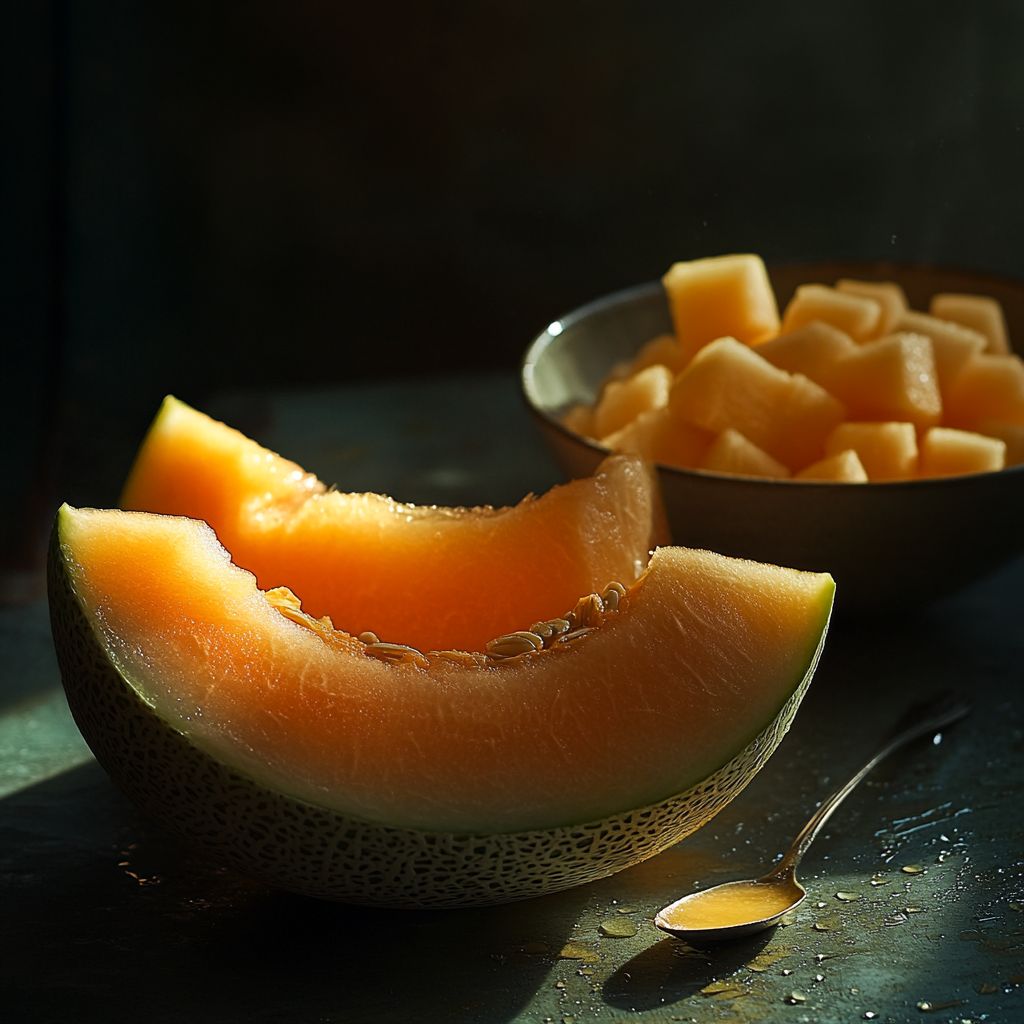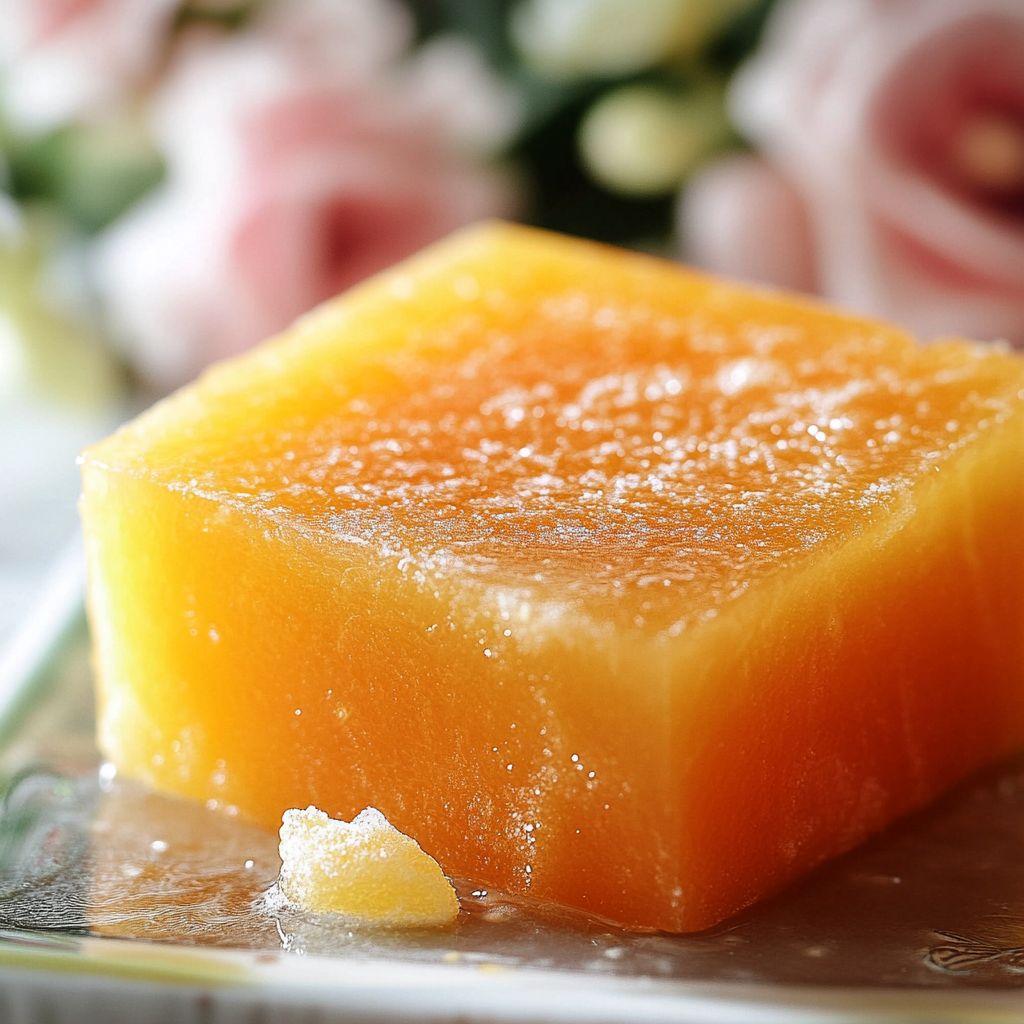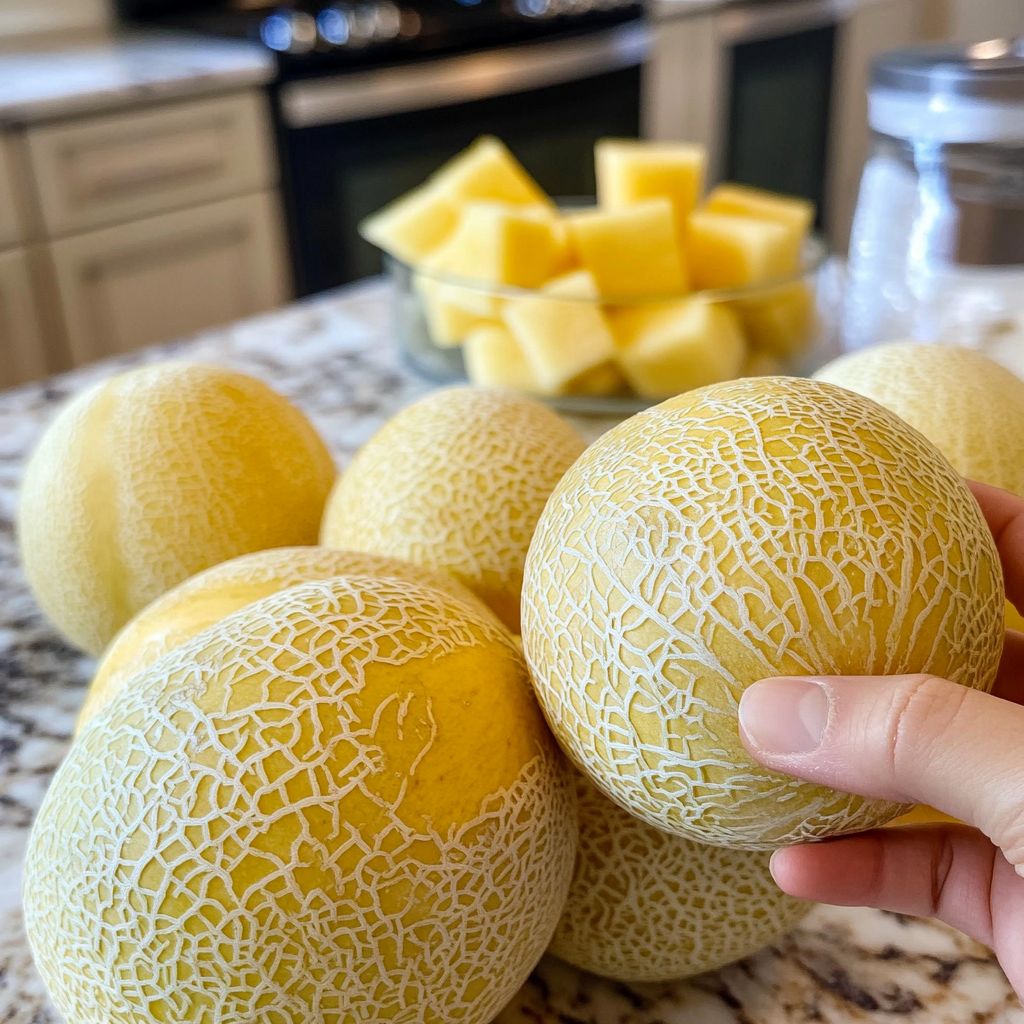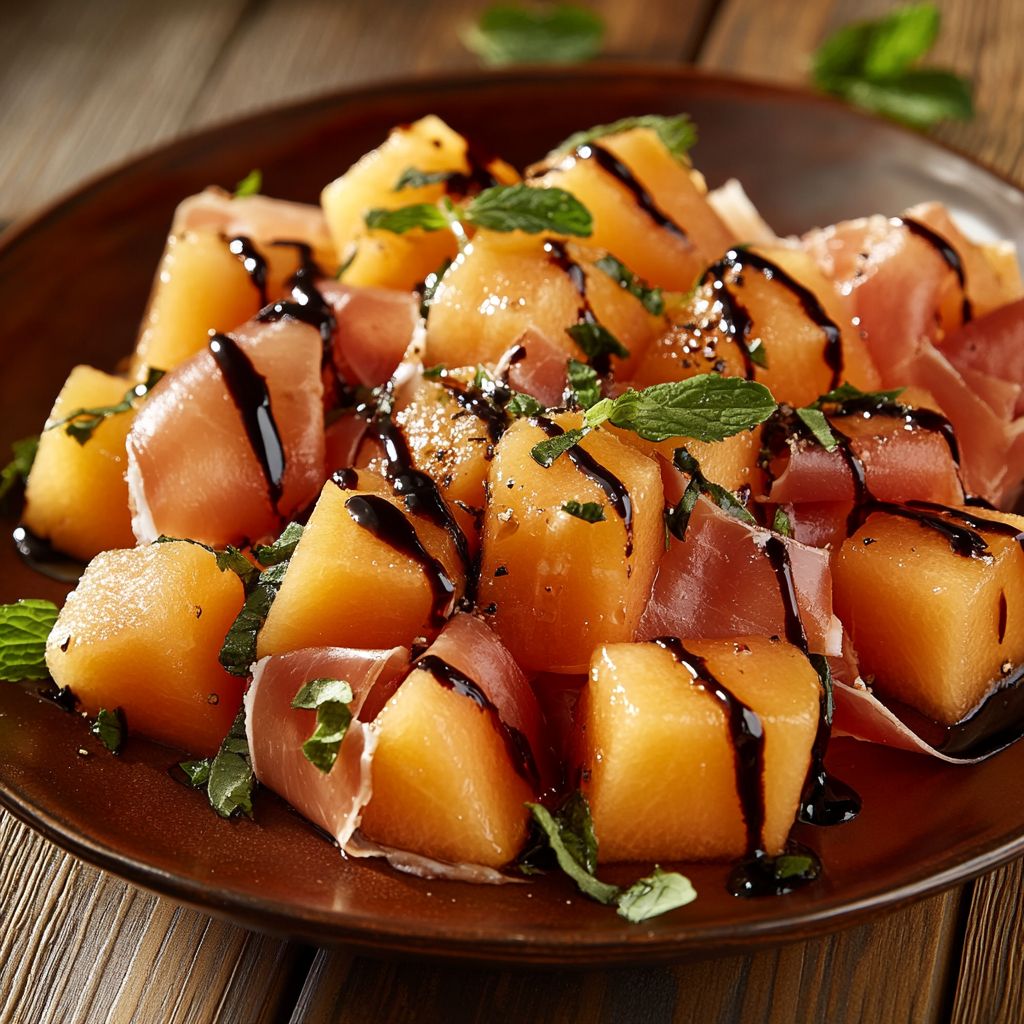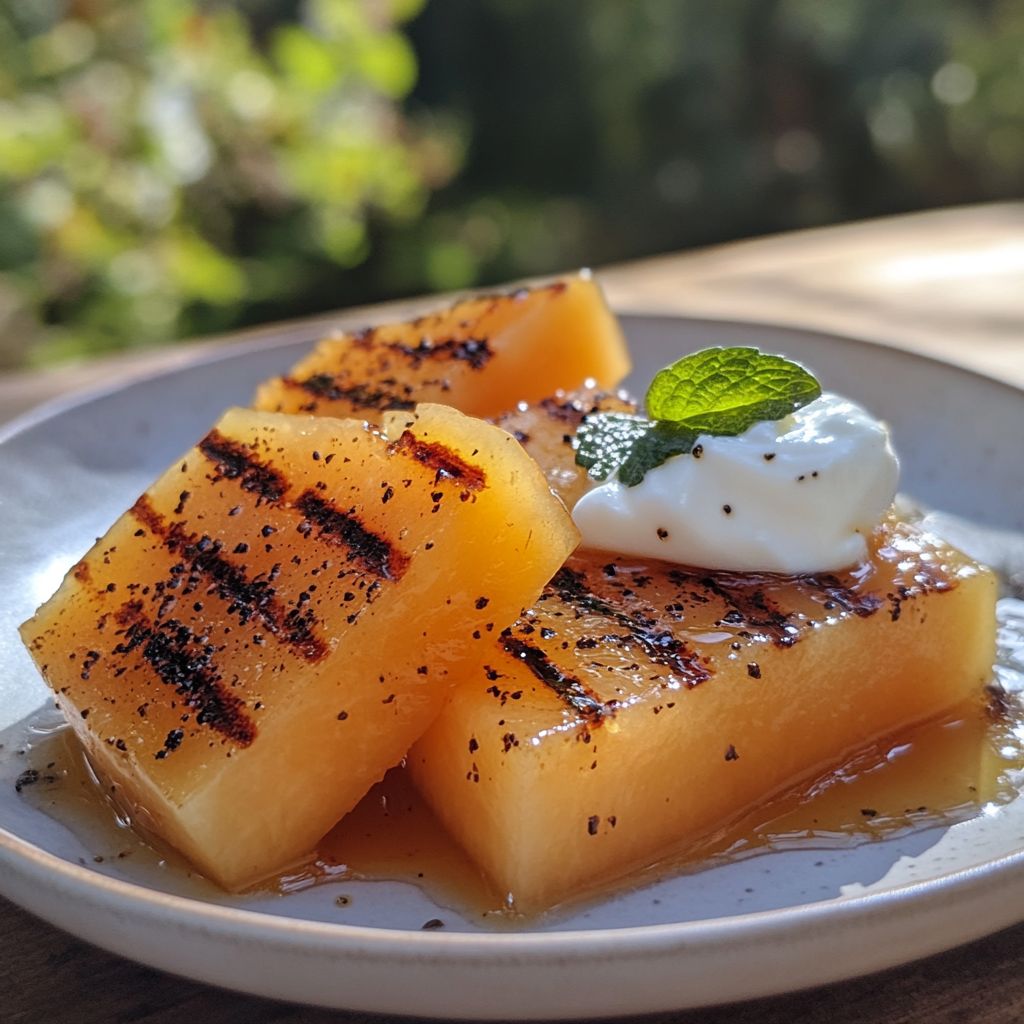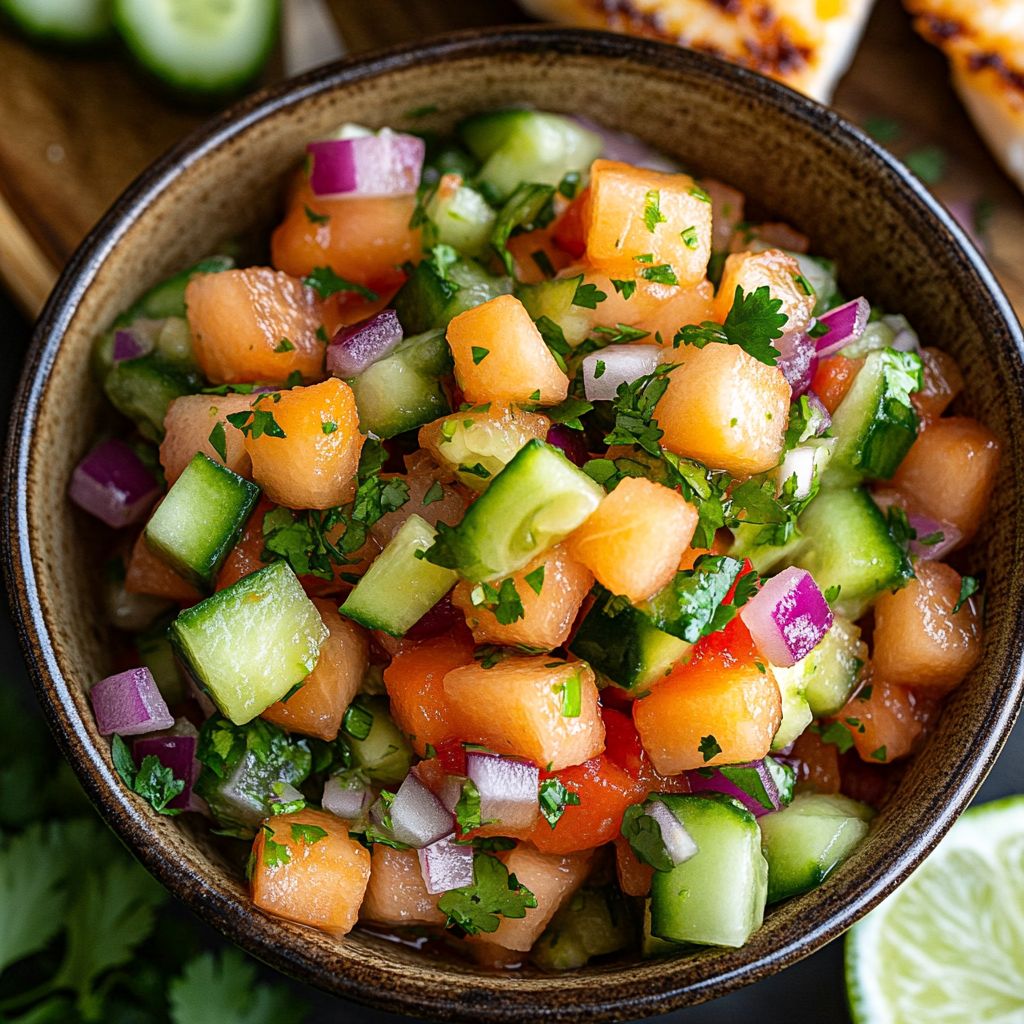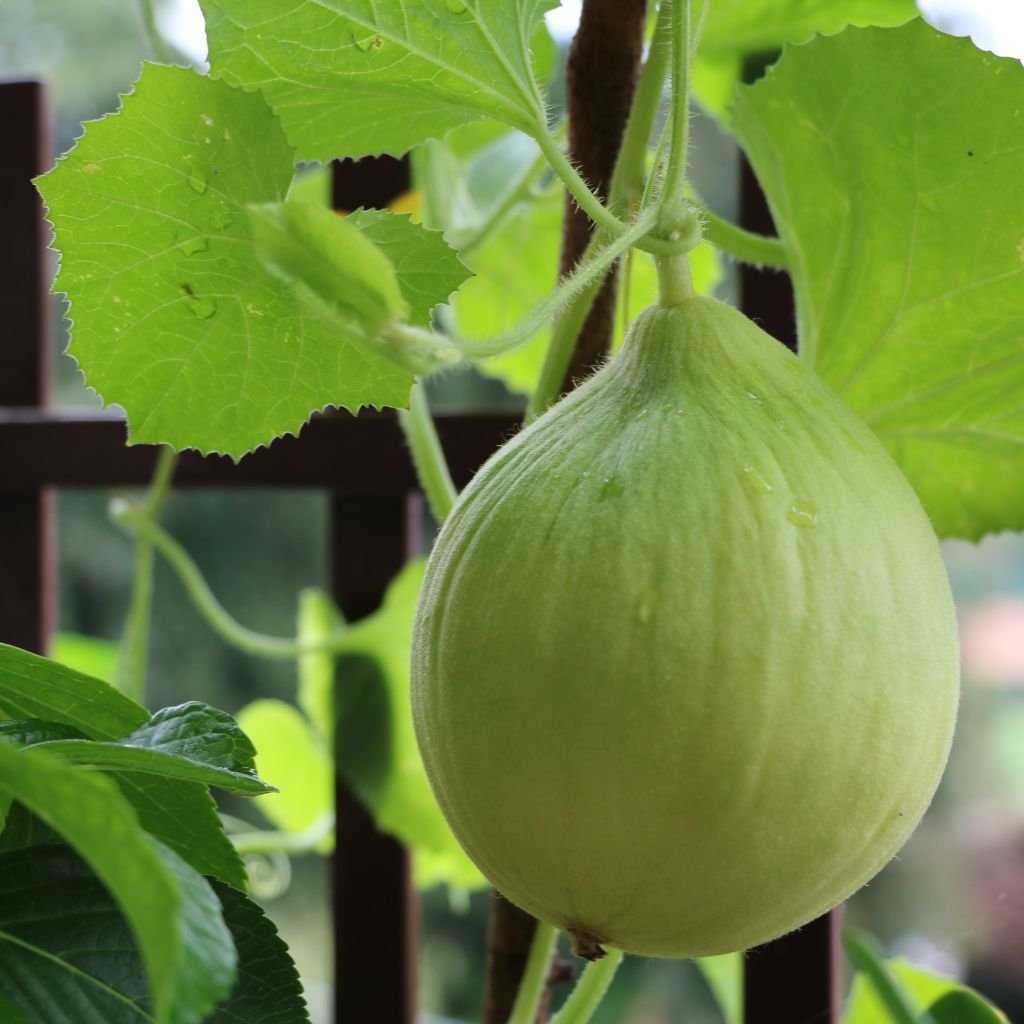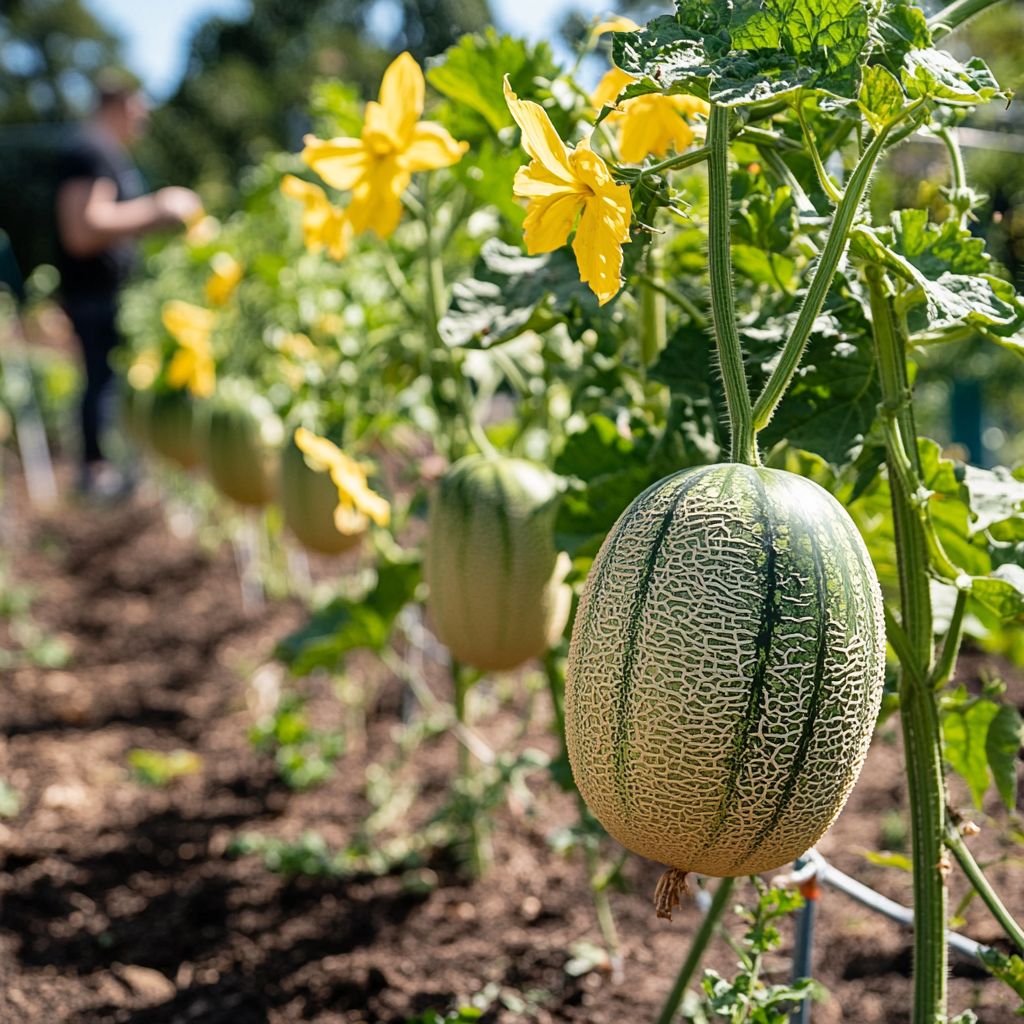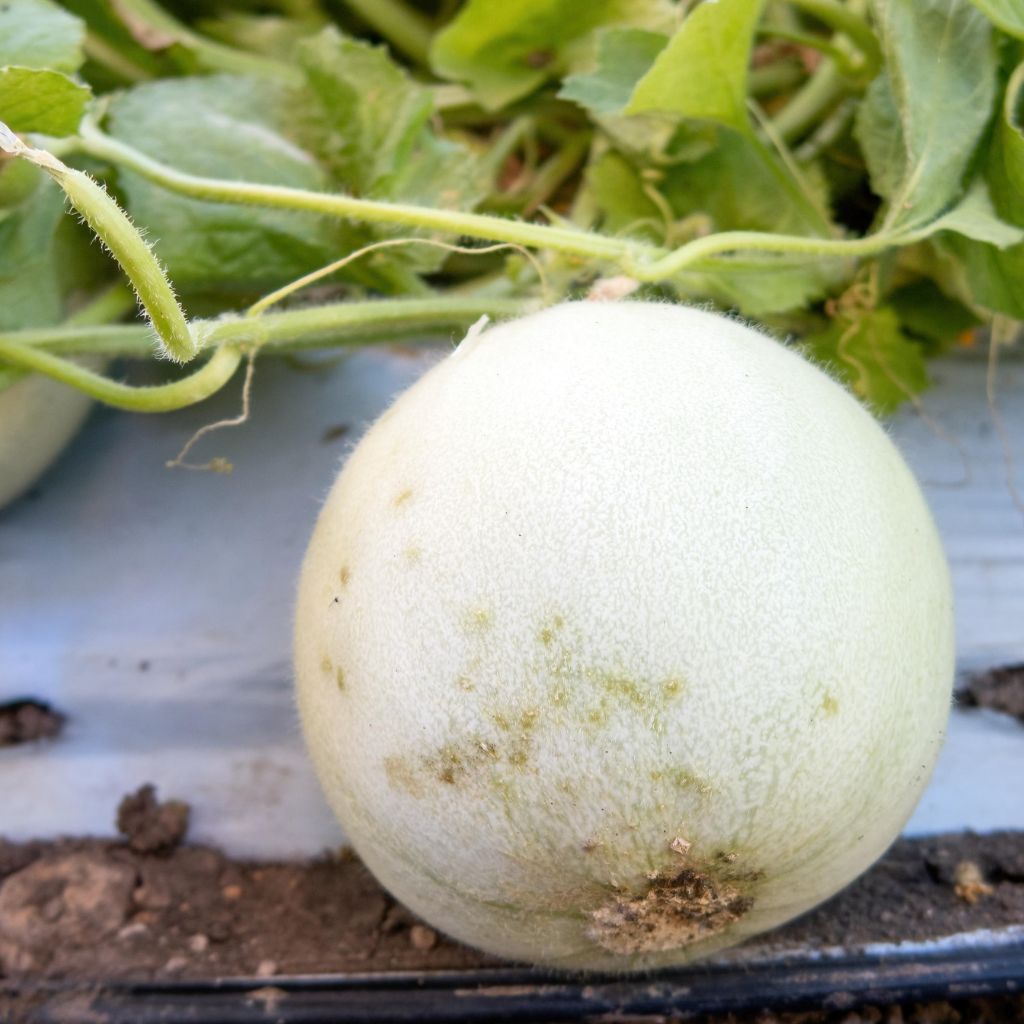When it comes to melons, the Sugar Cube variety stands out as a small but mighty treat.
As sweet and refreshing as its name suggests, this melon combines the flavor we crave with impressive nutritional benefits.
In this guide, we’ll explore everything you need to know about this delightful melon—from its flavor profile and culinary uses to the nutritional punch it packs and how you can grow your own.
What Is a Sugar Cube Melon?
The Sugar Cube melon is a petite, sweet, and highly aromatic cantaloupe variety. Unlike the larger cantaloupes found at most grocery stores, Sugar Cube melons are typically smaller, weighing in at just 2 to 4 pounds each.
Their flesh is a vibrant orange, and the outer rind sports the classic netted appearance you’d expect from a cantaloupe.
Despite their size, these melons are known for being incredibly sweet, with a sugar content that gives them their fitting name.
They make a perfect snack on a hot day, a delicious addition to fruit salads, or even a creative ingredient for smoothies and cocktails.
The Taste Profile: Sweet with a Hint of Floral
If you’re wondering what sets Sugar Cube melons apart from other types of cantaloupe, the answer lies in the taste.
They offer an intensely sweet flavor, often described as honey-like, with subtle floral notes that enhance their overall complexity.
When you take a bite, you’ll notice the perfect balance of sweetness and juiciness, making them incredibly refreshing and satisfying.
The texture of the flesh is tender and smooth, yet firm enough to hold up in salads and salsas. This versatility, combined with their unique sweetness, makes Sugar Cube melons a hit with both children and adults alike.
Nutritional Benefits: More Than Just a Sweet Treat
While the Sugar Cube melon is loved for its flavor, it’s also packed with nutrients that make it a healthy choice. Here’s a look at the key nutritional benefits this melon has to offer:
1. Rich in Vitamins
Sugar Cube melons are an excellent source of vitamin A and vitamin C, both of which play crucial roles in maintaining good health.
Vitamin A, in the form of beta-carotene, is essential for eye health, while vitamin C supports a strong immune system and helps the body repair tissues.
2. Low in Calories
Despite their sweet taste, Sugar Cube melons are low in calories, making them an ideal snack for those watching their calorie intake.
A single cup of diced melon contains roughly 60 calories, yet it provides a substantial amount of water, keeping you hydrated and satisfied.
3. High in Fiber
One of the lesser-known benefits of Sugar Cube melons is their fiber content. Dietary fiber is key to maintaining healthy digestion, and it can also help regulate blood sugar levels.
Incorporating fiber-rich foods like Sugar Cube melons into your diet can promote long-term gut health.
4. Hydrating and Refreshing
Like other melons, the Sugar Cube variety is made up mostly of water, which makes it an excellent hydrating food. Eating foods high in water content can help you stay cool and refreshed during the warmer months, reducing the risk of dehydration.
5. Rich in Antioxidants
Sugar Cube melons also contain antioxidants such as lutein and zeaxanthin, which are known to support eye health by protecting against oxidative stress.
Antioxidants help to neutralize free radicals in the body, which can lower the risk of chronic diseases like heart disease and cancer.
How to Select and Store Sugar Cube Melons
When choosing the perfect Sugar Cube melon, it’s important to know how to pick the ripest one. A ripe Sugar Cube melon will be fragrant and slightly soft to the touch near the stem end.
Its netted skin should have a golden hue, indicating that it’s ready to eat. If you pick up a melon and notice no scent or a very firm texture, it may need a few more days to ripen.
Once you bring your Sugar Cube melon home, you can store it on the countertop if it’s not yet fully ripe. However, once it reaches peak ripeness, it’s best to store the melon in the refrigerator to prevent over-ripening.
For optimal flavor and texture, try to consume your melon within a week of purchasing or harvesting it.
If you’re prepping the melon for a recipe, cut it into slices or cubes and store it in an airtight container in the fridge. Pre-cut melon should be consumed within 3-5 days to ensure freshness.
Creative Ways to Enjoy Sugar Cube Melons
Sugar Cube melons are as versatile as they are delicious. Whether you’re enjoying them fresh, incorporating them into a dish, or blending them into a beverage, the possibilities are endless.
Here are a few creative ideas for how to use this sweet little melon in your cooking:
1. Fresh and Simple: The Best Way to Enjoy
The simplest way to savor a Sugar Cube melon is to cut it open, scoop out the seeds, and dig in with a spoon.
The natural sweetness of the melon makes it a satisfying treat on its own, especially when chilled. You can also dice it up and toss it into a fresh fruit salad for added texture and flavor.
2. Melon Salad with Prosciutto
For a savory twist, try pairing Sugar Cube melon with thin slices of prosciutto. The salty flavor of the prosciutto complements the sweetness of the melon beautifully.
Add a drizzle of balsamic glaze and a sprinkle of fresh mint for a gourmet appetizer or snack.
3. Smoothies and Juices
Sugar Cube melons blend wonderfully into smoothies or fresh juices. For a refreshing summer drink, combine cubed melon with some ice, a squeeze of lime, and a handful of fresh mint.
If you’re making a smoothie, you can add yogurt or a plant-based milk for a creamy texture.
4. Grilled Melon with Honey
Grilling brings out the natural sugars in the melon, giving it a caramelized flavor. Simply brush the melon slices with a little olive oil and grill them for a few minutes on each side.
Drizzle with honey and serve with a dollop of Greek yogurt for a light and elegant dessert.
5. Melon Salsa
Diced Sugar Cube melon can be transformed into a refreshing salsa by mixing it with diced cucumber, red onion, cilantro, and a splash of lime juice.
This fruity salsa pairs well with grilled fish or chicken, adding a tropical twist to your meal.
Growing Sugar Cube Melons at Home
For those with a green thumb, growing your own Sugar Cube melons can be a rewarding experience.
These melons are relatively easy to grow, making them a great choice for both beginner and experienced gardeners. Here are some tips for successfully growing Sugar Cube melons in your own garden:
1. Planting and Soil Preparation
Sugar Cube melons thrive in warm, sunny conditions, so choose a planting site that gets plenty of sunlight.
The soil should be well-draining and rich in organic matter, with a pH level between 6.0 and 6.8. Melon plants can be started indoors in pots or sown directly into the ground once the danger of frost has passed.
2. Watering and Care
Melons require consistent watering to thrive, especially during hot weather. Be careful not to overwater, as melons prefer slightly dry conditions once the fruit begins to develop.
Mulching around the base of the plants can help retain moisture and keep the weeds at bay.
3. Pollination
Melons rely on bees for pollination, so ensure you have a pollinator-friendly garden by planting flowers nearby to attract bees. Without proper pollination, the fruits may not develop fully.
4. Harvesting
Sugar Cube melons are typically ready to harvest about 80 to 85 days after planting. You’ll know they’re ready when they easily detach from the vine with gentle pressure.
A fragrant aroma and a slight softness at the blossom end are also good indicators that the melon is ripe.
Whether you’re enjoying their unbeatable sweetness or appreciating the numerous health benefits they provide, Sugar Cube melons are a standout choice for summer snacking.
Their compact size, intense flavor, and rich nutrient profile make them an excellent addition to any garden, kitchen, or picnic basket.
From casual home cooks to gourmet foodies, everyone can find a way to enjoy this small but flavorful melon. Whether you slice it up for breakfast, grill it for dessert, or mix it into a fresh salsa, you’ll love the sweet and versatile flavors of the Sugar Cube melon.
